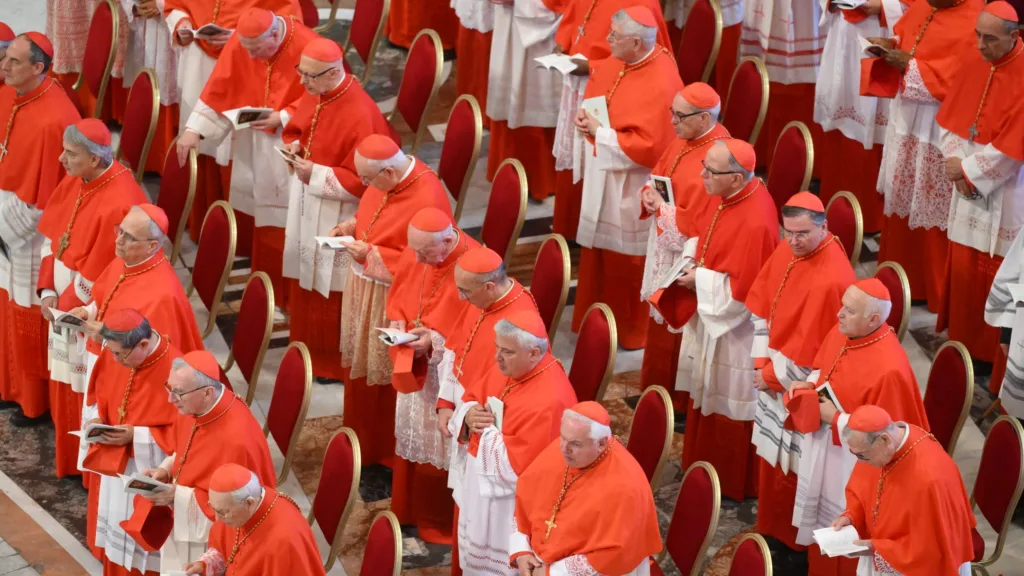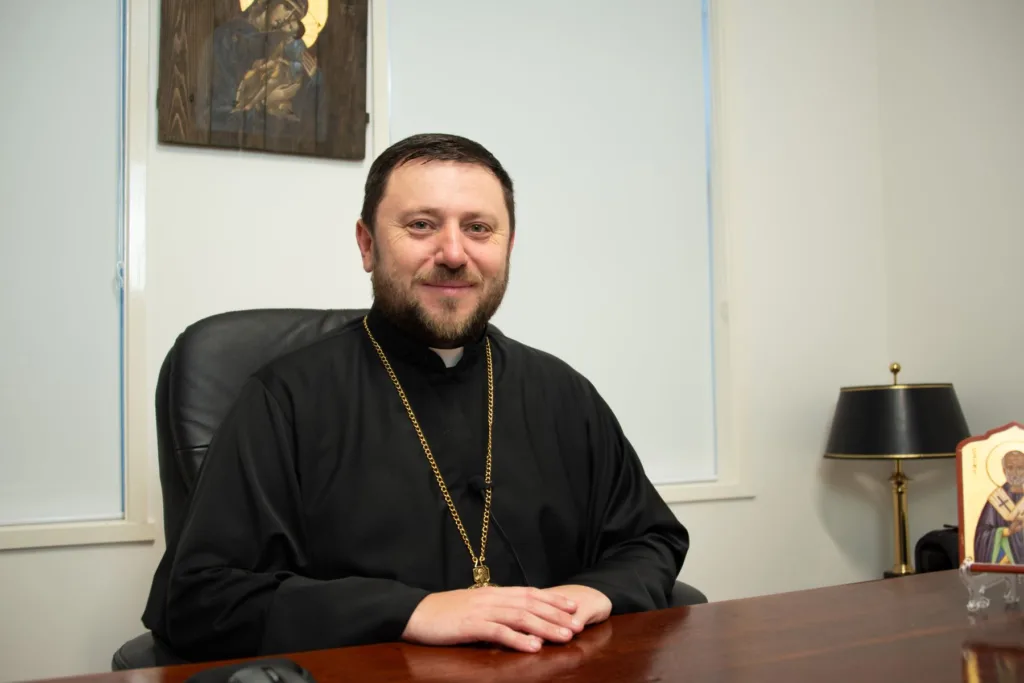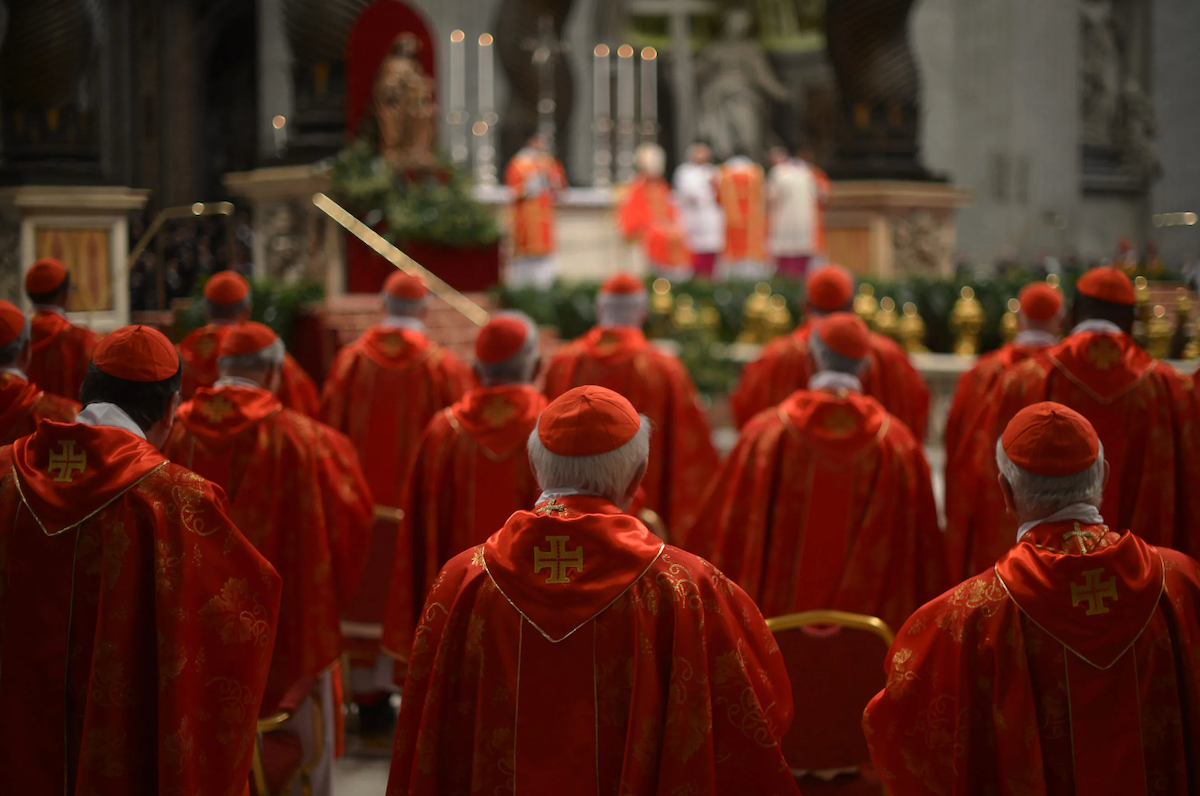The conclave, or the election of a new pope, is an event that has captured the public’s attention this spring. Even the views of the film of the same name starring Ralph Fiennes increased by 283% in a few days. Everyone is interested in who will become the next pope. Ukrainians are especially interested in the outcome of the conclave, as the pontiff is a significant diplomatic figure who can either continue the policy of support and assistance to Ukraine or remove it from the agenda.
However, as cardinals from all over the world gather in the Vatican to decide the fate of the Catholic Church on 7 May, HMH tried to find out who will elect the new pope, how the face of Catholicism has changed over the past half century, and what are the chances of a Ukrainian candidate for the apostolic throne. Read more about this in an interview with Father Taras Zheplinsky, head of the Information Department of the UGCC.
Read also: How a new pope is elected
The ‘inter-papal’ period and its vicissitudes
— What happens immediately when a pope dies?
— When a pope dies, his seal is immediately destroyed so that no one can forge documents. Then, when a new pope is elected, the seal will be made again. But in the ‘inter-papal’ period, it does not exist. Also, many employees from the deceased pope’s entourage automatically lose their positions.
After the pontiff’s funeral, the cardinals pray for the repose for another nine days, and then the College of Cardinals meets to elect a new pope. In fact, this is the main function of the College of Cardinals. Before the conclave itself, they hold several working meetings, in particular to decide when and where the funeral will take place, to analyse the state of the world and the church, as well as the traits of the new pope, to determine the date of the conclave – this time it will begin on 7 May – and to resolve other urgent matters.
Francis’ funeral took place on Saturday 26 April. According to his will, he was buried not in the Vatican, but in the Basilica of Santa Maria Maggiore in Rome. This church houses the manger, where, according to legend, Jesus Christ was placed after his birth. It is also home to the icon of the Virgin Mary ‘Salvation of the Roman People’, before which Francis prayed before each of his business trips.

How cardinals were starved to death in the 13th century
— What is a conclave?
— Conclave means ‘with keys’ in Latin. It means an event that takes place behind the closed doors of the Sistine Chapel. The participants in this process cannot use any means of communication. They vote several times a day. They write one name by hand on the ballot papers. After each round of voting, the ballots are burned. This can take several days or weeks. For example, the two previous conclaves lasted two days each. The longest conclave was in the 13th century and lasted almost three years. Back then, only 15 cardinals elected the pope. And they argued for so long that the authorities decided to lock them in one room and even limit the supply of food. After these measures, they quickly elected Gregory X, who was absent and did not even have the title of cardinal.
By the way, shortly before his death, Gregory X established new rules for the conclave: the cardinals had to meet no later than 10 days after his funeral. During their work, they had to completely isolate themselves from the world, not communicate or correspond with outsiders. If they did not elect a pope within three days, their diet was gradually reduced to bread and water. Of course, today this process is more humane, but the tradition of isolation is still preserved.
And the traditional white smoke that comes from the chimney of the Sistine Chapel has a very practical meaning. In ancient times, how else could the cardinals give a sign that it was time to release them?

Any cardinal under the age of 80 can participate in the conclave, and thus be a candidate for the new pope. Today, this range is 135 people – from the youngest Ukrainian, who is 45, to the oldest cardinal, who is 80.
— Who are cardinals?
— Cardinals are the closest collaborators of the Pope, who are usually bishops, i.e. unmarried senior church officials. However, the title of cardinal can also be given to a priest or even a layman who has special merits before the church, for example, who has suffered for the faith.
Is the good old Europe not so Catholic after all?
— All cardinals are appointed by the current pope, which means that he shapes his environment and the ‘face of the church’. At previous conclaves, this face was predominantly European. However, the current conclave will have a more global dimension to the origin of the cardinals.
Today, there are more than 1 billion and 400 million Catholics in the world. Their number is decreasing in Europe, but is growing rapidly in African countries, Latin America and Asia. As a result, Catholic churches are becoming empty in Ukraine and Poland, while in South Korea, for example, they are filling up.
For several centuries in a row, the popes were exclusively Italians, and all the politics of the Catholic Church revolved in Western Europe. In the 1970s, John Paul II, a Pole from Eastern Europe, became pope. And in 2013, Pope Francis became the first pontiff from outside Europe. And during his reign, he changes the face of the College of Cardinals by 80%, including new young members who come from countries that have never had cardinals before. So this time, we could theoretically get a pope from, for example, African Guinea, Chile, Peru, Canada, or Mongolia.
And what about Ukrainians?
— In December 2024, a Ukrainian, Mykola Bychok, Bishop of the Ukrainian Greek Catholic Church in Australia, was also named a cardinal. He also became the youngest of the cardinals – he was 44 years old at the time of the announcement. Why did a Ukrainian bishop who leads a small community of Greek Catholics in Australia receive the title of cardinal, while, for example, the head of a large Roman Catholic community in Lisbon, the capital of Portugal, did not? We do not know that. It was a personal decision of Pope Francis. Presumably within the framework of his policy and his logic.

The previous Ukrainian who participated in the papal election in 2005 was Lubomyr Husar. Benedict XVI was elected at the then conclave.
Does Bishop Nikolai have a realistic chance of becoming the new pontiff? Who knows? The Apostle Peter was a Jew, but he became the first pope. Although it is not entirely appropriate to compare the current multi-confessional world with the first century AD. Today it is hard to imagine a non-Roman Catholic becoming pope, but it is theoretically possible. What is important is that the voice of a Ukrainian and Ukraine will be heard at the upcoming conclave.
— Can the election of a new pope change the Vatican’s policy towards Ukraine?
— All commitments to support Ukraine made during Francis’ pontificate will remain in force. If the new pope is a truly spiritual, moral leader (and he should be), he will remain on the side of Ukraine as a state that is being unfairly attacked. However, how intensively he will help depends on who he becomes. Fortunately, it will definitely not be someone from Russia – they have no cardinals.
Read also: Life after the frontline: programmes and opportunities for veterans



